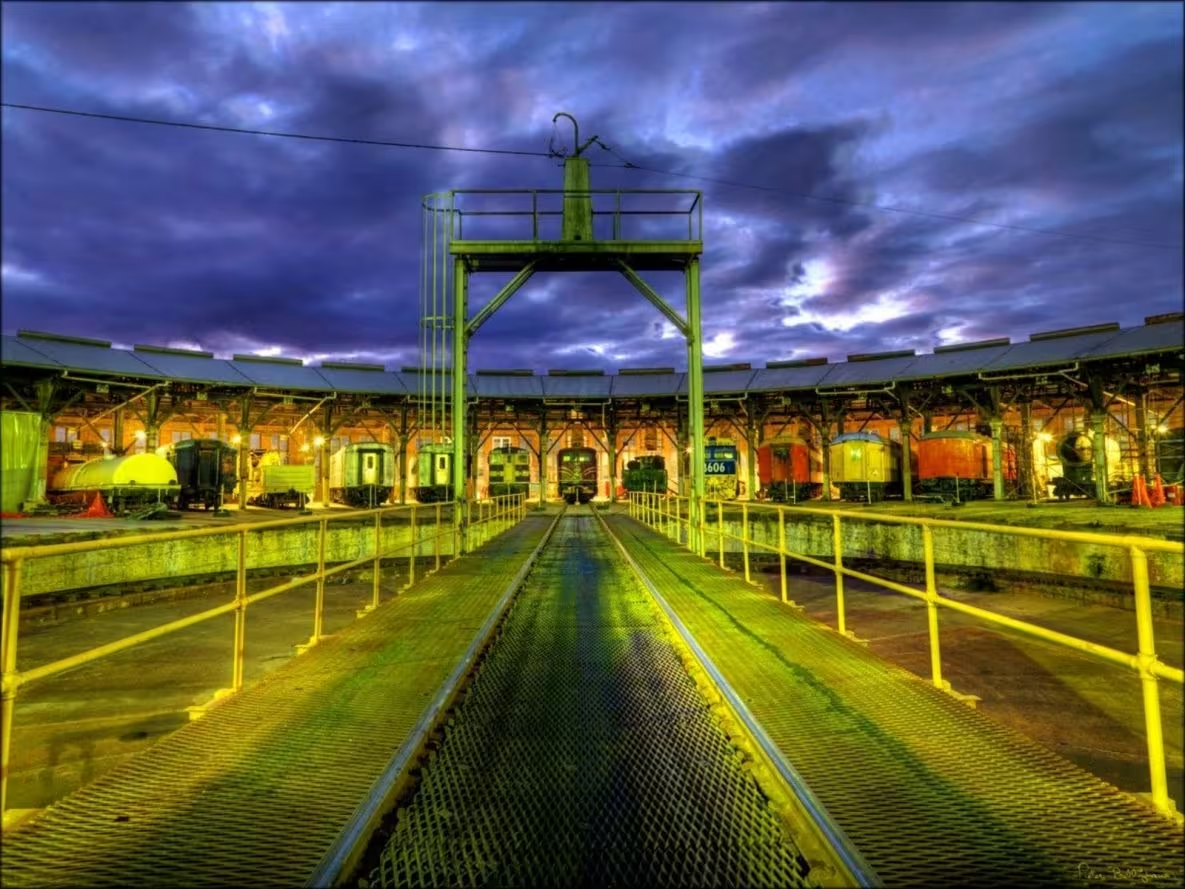Junee Roundhouse
Project Highlights:
- Optimised employee comfort
- Reduced indoor ambient temperature
- Improved air quality
- Helped prevent soot build-up within roundhouse
The Challenge
Junee Roundhouse is a regional heritage transport museum that is operated by a group of volunteers who conserve, restore, and maintain historical exhibits and steam locomotives. The construction of the Roundhouse commenced in 1943 and encompasses 42 repair bays, a machine shop, a coal stage, and a de-ashing pit. While the museum occupies a portion of the Roundhouse, the other section, including the turntable, is still utilised as a servicing facility for diesel locomotives by the Junee Railway Workshop. It is the largest operating Roundhouse in the Southern Hemisphere.
In recent years, the Roundhouse faced the challenges posed by an aging roof, compounded by damage caused by storms. As a result, a significant portion of the roof required replacement, including the natural ventilation systems that had been installed by Airocle in the early 1960s.
Often when conducting restoration on rail projects, steam, heat, soot and chemicals are used on the locomotives which become airborne. One of the major concerns is the air quality for the volunteers if adequate ventilation was not provided. Additionally a product needed to be provided that had a good rain resistence class to weather stroms but something that also provided longevity against rust.

The Solution
To overcome these challenges, careful consideration was given to finding the right solution. A product that combined effective ventilation, rain resistance, and durability against rust was sought. The aim was to ensure optimal air quality for the volunteers and maintain the Roundhouse’s structural integrity.
One of the key concerns with adding natural ventilation was that it could rust quickly, due to the chemicals within the coal and mechanical fluids used. Most of the solutions available from other supplies only offered an extremely different design from the traditional “Whirly Bird” look, or were made from materials prone to rusting.
Airocle was able to offer bespoke vents that helped to improve on all of the challenges that they were facing. A galvansied steel option was presented for our 5 Series design which was quickly accepted. This allows for longevity, a traditional look and better conditions for volunteers. Additionally, our 2 Series were also made using galvanised steel, which was similar to the system previously installed by Airocle that had proven effective in the past.
The Results
We replaced many of the old rusted vents with new ventilation systems that are crafted to withstand extreme wind loads. These ventilators provide optimal airflow while maintaining a sleek and unobtrusive appearance. Their engineered design ensures they can endure the harshest weather conditions while effectively ventilating the Roundhouse. Made from galvanised steel, these ventilation systems offer exceptional resistance against rust and corrosion, ensuring their durability for years to come.
The implementation of these advanced ventilation systems has significantly improved the air quality within Junee Roundhouse, particularly during steam locomotive operations. Building occupants, including volunteers and visitors, can now enjoy better-quality air while working with locomotives in steam. This enhanced air circulation creates a safer and more comfortable environment for everyone involved, supporting the preservation and maintenance of the historical exhibits and steam locomotives at the Roundhouse.


